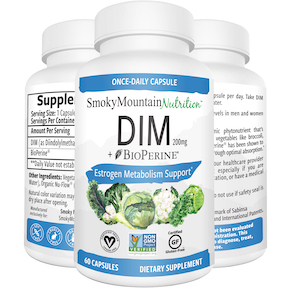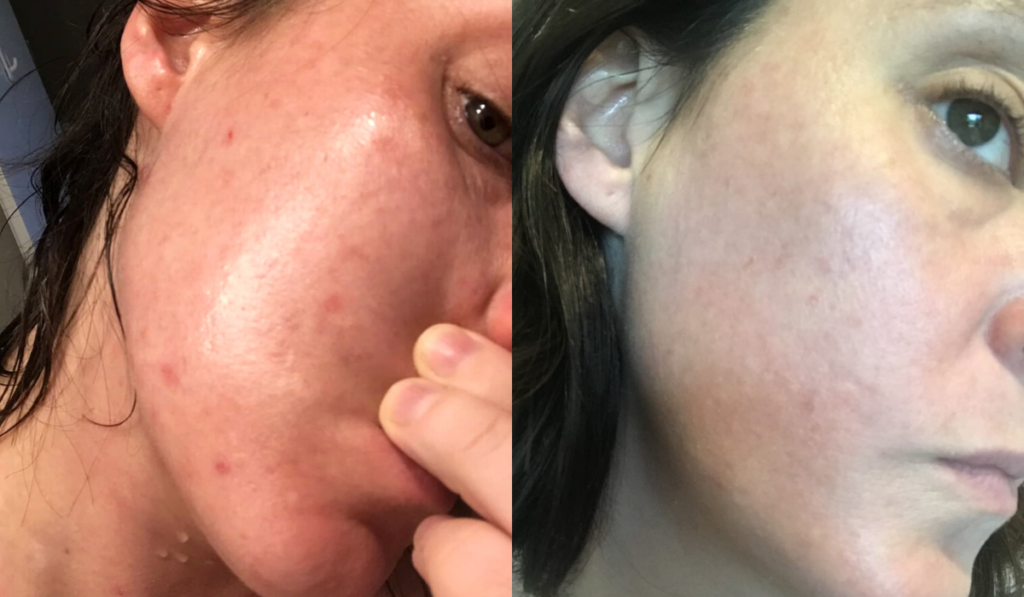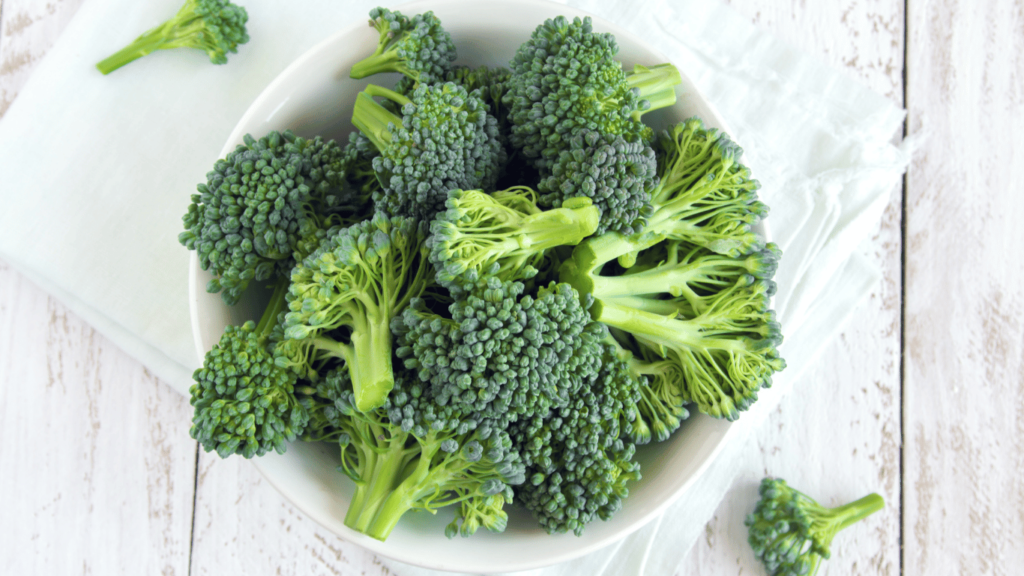DIM can help with Estrogen Dominance by regulating estrogen levels and by helping the liver to metabolize “fake” or bad estrogen. Estrogen Dominance can cause a whole host of issues that can certainly knock your confidence such as acne, belly fat, bloating, mood swings, and headaches.
What is Estrogen Dominance?
Estrogen dominance is a condition in which there is an imbalance of the female hormone estrogen relative to other hormones in the body. This imbalance can lead to a wide range of symptoms and health problems, including menstrual irregularities, hormonal acne, infertility, weight gain, mood swings, and an increased risk of certain types of cancer.
Estrogen dominance is a little different from just having elevated estrogen levels. It is about that relationship between estrogen and progesterone. Estrogen and progesterone levels rise and fall in a carefully coordinated way throughout the menstrual cycle, but this can sometimes become unbalanced. Outside factors like lifestyle, diet, environmental toxins, stress, and certain medications, can be part of this and genetic predisposition to estrogen dominance can also be the culprit.
Estrogen levels are highest in the first half of the menstrual cycle, while progesterone levels rise in the second half. This balance between estrogen and progesterone is essential for the normal functioning of the reproductive system and for maintaining overall health. However, in cases of estrogen dominance, the balance between these two hormones is disrupted, and estrogen levels remain elevated relative to progesterone levels.
One of the primary causes of estrogen dominance is exposure to environmental estrogens, also known as xenoestrogens. This is something that we have all been exposed to since the Industrial Revolution. To explain further, xenoestrogens are synthetic compounds that mimic the effects of natural estrogen in the body and are found in a variety of everyday products, including plastics, pesticides, and processed foods. Exposure to these environmental estrogens can disrupt the body’s hormonal balance and contribute to estrogen dominance or an imbalance of “bad” and “good” estrogens.
Does Estrogen Dominance Cause Belly Fat?
Belly fat, also known as visceral fat, is the type of fat that accumulates around the organs in the abdominal cavity and is associated with an increased risk of various health problems, including cardiovascular disease, type 2 diabetes, and certain types of cancer.
One of the primary ways in which estrogen dominance can contribute to belly fat is through its effect on insulin sensitivity. Insulin is a hormone that is responsible for regulating blood sugar levels in the body, and insulin resistance is a condition in which the body’s cells become less responsive to the effects of insulin. This can lead to high blood sugar levels and the accumulation of visceral fat.
Estrogen has been shown to play an important role in regulating insulin sensitivity, and estrogen deficiency or estrogen dominance can both contribute to insulin resistance. When estrogen levels are low, as is the case in menopause, for example, insulin sensitivity can be reduced, leading to an increased risk of belly fat and other health problems. When estrogen levels are high, it can lead to an imbalance between progesterone and estrogen, which can also lead to insulin insensitivity.
Another way in which estrogen dominance can contribute to belly fat is through its effect on cortisol – a hormone that is produced by the adrenal glands in response to stress. Cortisol plays an important role in regulating blood sugar levels and can also contribute to the accumulation of belly fat when levels are chronically elevated.
Belly fat can also accrue through the effect of estrogen on adiponectin, a hormone that is produced by fat cells and plays an important role in regulating insulin sensitivity and inflammation. Estrogen irregularity contributes to a reduction in adiponectin levels.
When adiponectin levels are low, it can lead to an increased risk of insulin resistance, inflammation, and the accumulation of belly fat. Therefore, estrogen dominance can contribute to belly fat by reducing adiponectin levels and disrupting the hormonal balance in the body.
Estrogen Dominance and Stress
Another factor that can contribute to estrogen dominance is stress. When the body is under chronic stress, the adrenal glands produce high levels of the hormone cortisol, which can interfere with the normal balance between estrogen and progesterone. This can lead to a range of symptoms, including irregular periods, mood swings, and weight gain.
Certain medications can also contribute to estrogen dominance. For example, hormonal birth control methods such as the pill or patch contain synthetic estrogen and progesterone, which can disrupt the body’s natural hormonal balance. Other medications, such as tamoxifen, which is used to treat breast cancer, can interfere with hormonal balance and contribute to estrogen dominance.
Symptoms of Estrogen Imbalance
Symptoms of estrogen dominance can vary widely depending on the severity of the hormonal imbalance and the individual’s overall health. Some common symptoms of estrogen dominance include:
- Irregular periods
- Heavy periods
- Acne
- Mood swings
- Breast tenderness
- Bloating
- Weight gain
- Headaches
- In some circumstances, women with estrogen dominance may also experience infertility, fibroids, endometriosis, or polycystic ovary syndrome (PCOS).
How to Fix Estrogen Dominance Naturally
Fortunately, there are some steps that you can take to help balance your hormones and reduce the symptoms of estrogen dominance. This can be done by:
- Minimizing exposure to environmental estrogens by choosing organic foods and using natural household cleaning products, whenever possible.
- Managing stress. Techniques such as meditation, exercise, yoga, counseling and deep breathing can be effective in reducing stress.
- A diet rich in whole foods, fruits and vegetables, and healthy fats (such as avocado, olive oil and salmon can help to support overall health and balance hormones.
In some cases, hormone replacement therapy (HRT) may be recommended to help balance hormones and reduce the symptoms of estrogen dominance. This can involve the use of synthetic hormones, such as estrogen and progesterone, or natural hormones, such as bio-identical hormones. This is something you can ask your doctor, a Homeopathic or Naturopathic doctor, or an integrative practitioner about starting.
Is DIM Good for Hormonal Acne?
Not every type of acne is hormonal. Having said that, hormonal acne is often the cause of major and continuing breakouts and it has some telltale signs such as:
- Breakouts around the jawline and chin: Hormonal acne tends to appear in specific areas of the face, particularly the lower part of the face. Breakouts around the jawline and chin are particularly common with hormonal acne.
- Deep, painful cysts: Hormonal acne can produce large, deep, painful cysts beneath the skin. These can be difficult to treat and may take longer to heal than other types of acne.
- Acne flare-ups during menstrual cycle: Many women with hormonal acne notice that their acne flares up during certain times of the month, particularly around the time of ovulation and menstruation.
- Increased oil production: Hormonal fluctuations can stimulate the production of oil in the skin, leading to oily, shiny skin and clogged pores.
- Blackheads and whiteheads: Hormonal acne can produce blackheads as well as small, red, inflamed pimples.
- Scarring and pigmentation: In severe cases, hormonal acne can lead to scarring and pigmentation changes on the skin, but there are ways to combat these scars such as microneedling, collagen intake, chemical peels, fructose peels, lactose-based peels, and red light therapy.
- Persistent acne: Hormonal acne can be difficult to treat, and may persist even with traditional acne treatments such as topical creams and oral antibiotics.
It is also one of the most common reasons women experience acne in adulthood, even if they didn’t during their teenage years. It doesn’t have to appear just before or during your period; but that’s when many find that it gets worse.
An imbalance of natural estrogen, synthetic environmental estrogens, progestrone-to-estrogen ratio and testosterone can cause adult acne.

(these are the ones I use, and they have literally changed my life).
Is DIM the Natural Acne Alternative to Accutane?
After years of believing that I was just creating my acne due to obsessive-compulsive skin picking, I decided it was time to visit the dermatologist to find out. He seemed way less concerned about the use of Accutane than I am. Call me silly but I don’t want to be calling a 1-800-you-got-screwed number in a decade from now.
“Do you just want to get rid it?” My dermatologist asks. Of course I did. “Then, let’s start you on Accutane.” I was all about it at first, sounded like dream plan. No more boob breakouts, face cysts or those tricky little whiteheads that pop up around my jawline once a month (for at least half the month).
I’ve been struggling with adult acne for the last 3 decades. In school, I was lucky; no acne. Although, I did have eczema all over my face and, at one special point in middle school, I also had a cluster of warts that had taken up accommodation all over my mouth and lips. Really didn’t help that my nickname at the school prior had been “witchy bitchy,” and I had now started to live up to the name, aesthetically speaking at least, but that’s a story for another time.
“Don’t worry, this acne treatment has been known to cause birth defects. You’re not pregnant, so it doesn’t matter,” says my overly-confident dermatologist, who I had met just that day. Don’t get me wrong, I think he was excellent at what he does, I just err towards nature, and where possible, away from drugs that cause major birth defects.
As I thumbed through the massive pile of paperwork, the warnings, and the schedule of blood tests I would need to take, I started to feel like Accutane was a bit scary. I wanted to find another way, a natural way.
What causes hormonal acne?
Hormonal acne pops up (and somewhat dominates your life) due to fluctuations of hormones. For women, it doesn’t have to appear just before or around your period, but that’s when many find that it gets worse. It’s an imbalance of testosterone that leads to an overproduction of oil.
You’ve got all this extra oil that attracts dirt, blocked pores and bacteria that lead to blackheads, whiteheads, boils, and all sorts of wonderful stuff. It’s a perfect storm. To tackle the acne, you need something that keeps your hormones and oil balanced.

(these are the ones I use, and they have literally changed my life).
A Quick Before & After:

DIM: The Magic Pill
It took an incredible amount of digging and validation, but I finally found the natural alternative to Accutane.
DIM is that natural remedy. Diindolylmethane (DIM) is a phytonutrient found in cruciferous vegetables such as broccoli, cauliflower, and cabbage. It has been shown to regulate estrogen and testosterone in both men and women. But all magic comes at a cost. Unlike the potential permanent acne fix, Accutane, DIM isn’t just one and done. However, taking DIM every day and striking a balance with your hormones helps with way more than just acne.
What else can DIM do?
DIM cleared up my skin in a matter of weeks, but it could also have some other added benefits:
- Shown to slow some cancer cells – particularly hormonal cancers such as breast and prostrate cancer
- Lowers toxins produced by your body’s natural metabolism
- Boosts antioxidants
- Promotes weight loss via more efficient fat metabolism
- Enhanced memory
- Improved mood
- Increased energy
- Reduced PMS symptoms
- Supports cardiovascular health
- Promotes good muscle development
- Improves prostate health for men
Although this isn’t medical advice, it is something I’ve personally lived through and been absolutely astonished by. I hope this helps you too. For more information about natural alternatives and adjuvants, please feel free to sign up to the Wildestry newsletter.

